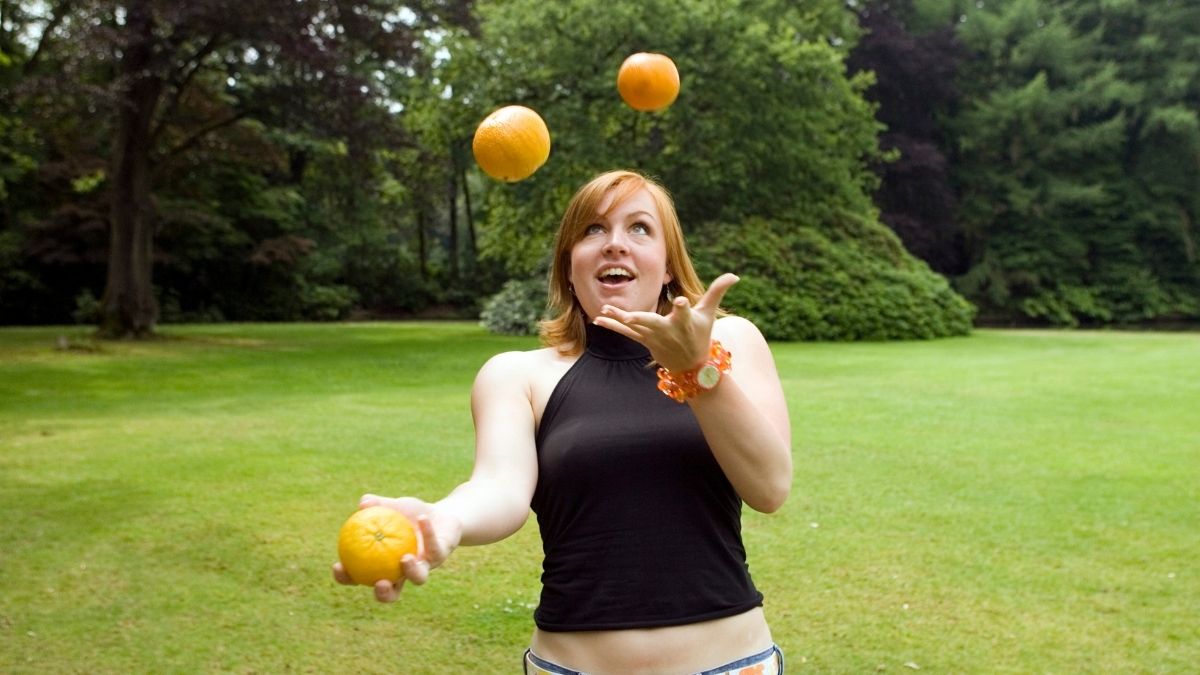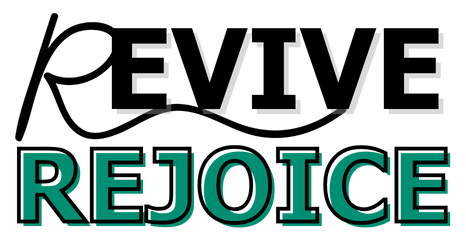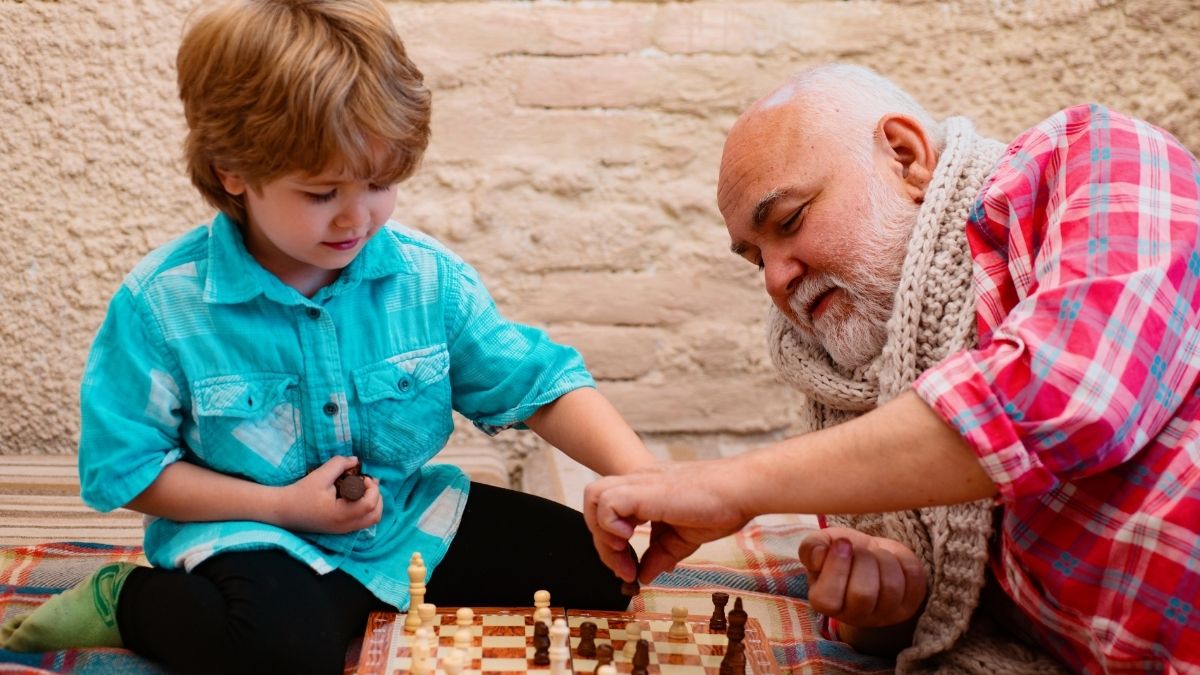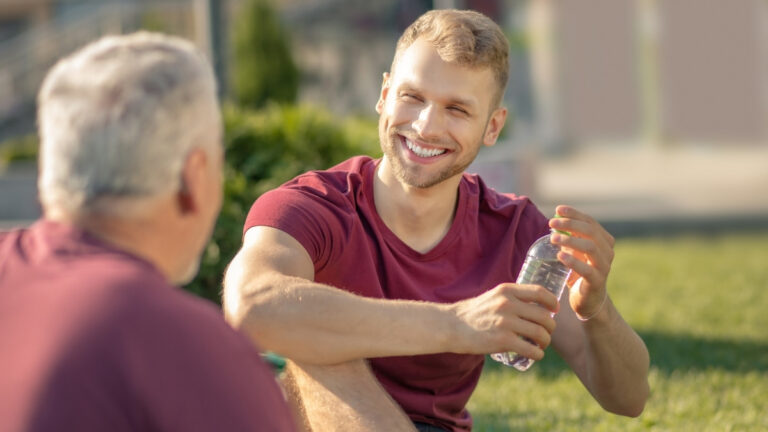10 Tiny Daily Rituals This 80-Year-Old Man Uses To Stay Razor Sharp (Number #7 Is Strongly Backed By New Brain Science!)
Meet Sarah, a 93-year-old who just launched her first YouTube channel. While your friends complain about forgetting names, she memorizes scripts and edits videos like a pro.
Feeling frustrated watching your mental sharpness fade with each passing year. Sarah belongs to an extraordinary group of 90-year-olds who’ve cracked the code to keeping their minds young and agile.
These inspiring seniors don’t just cope with aging – they thrive, outsmarting people half their age at chess and learning new languages for fun. Their secret lies in 10 simple daily habits that anyone can follow.
Bilingual Juggling Practice
Pro Tips:
- Start with soft balls to reduce anxiety.
- Learn basic greetings in a new language first.
- Practice over a bed to avoid chasing balls.
Non-Dominant Hand Use
Pro Tips:
- Start simple: brush your teeth or stir coffee.
- Try writing your name once daily.
- Use your non-dominant hand for phone swiping.
Sensory Deprivation Meditation
Pro Tips:
- Use a dark room and noise-canceling headphones.
- Try a white noise machine to mask ambient sounds.
- Start with just 5 minutes and build up.
Intergenerational Storytelling
Pro Tips:
- Use photos or old objects to trigger memories.
- Record the sessions to preserve history.
- Prepare a few broad themes beforehand.
Cognitive Micro-Workouts
Pro Tips:
- Do squats while solving simple math problems.
- Try lunges while reciting a poem or list.
- Set reminders for short bursts throughout the day.
Gastro-Intuitive Eating
Pro Tips:
- Remove ALL digital distractions while eating.
- Take 20 full minutes to finish a meal.
- Chew every bite thoroughly and deliberately.
Neurobic Dining
Pro Tips:
- Try eating with your eyes closed (start with safe foods!).
- Use unfamiliar utensils (chopsticks, non-dominant hand).
- Focus entirely on texture and temperature.
Reverse Mentorship
Pro Tips:
- Set clear learning goals for both parties.
- Schedule regular, dedicated meeting times.
- Be patient; different generations learn differently.
Dynamic Napping (Audio)
Pro Tips:
- Use binaural beats or specific nature sounds.
- Set alarms to prevent oversleeping (keep it to 20 mins).
- Maintain a consistent daily nap schedule.
Volunteer Physical Activities
Pro Tips:
- Try community gardening or animal shelter dog walking.
- Commit to a regular weekly schedule.
- Focus on building relationships with fellow volunteers.
1. Bilingual Juggling Practice
This innovative cognitive enhancement technique combines physical coordination with language learning, creating a unique brain-training experience.

Research has shown that engaging in simultaneous activities like juggling and language practice can significantly boost neuroplasticity and cognitive function.
When practiced consistently for 10-15 minutes each morning, this exercise helps develop new neural pathways while improving memory retention and motor skills.
Tips for Bilingual Juggling Practice:
- Begin with soft, lightweight balls to build confidence and reduce anxiety
- Start by learning basic greetings and numbers in your target language
- Practice over a bed or soft surface to prevent ball damage
- Record yourself to track pronunciation improvements
- Gradually increase complexity by adding more words and balls
2. Non-Dominant Hand Navigation
Engaging your non-dominant hand in daily activities represents a powerful way to challenge and strengthen your brain’s neural networks.
This practice, when implemented during mid-morning tasks, forces your brain to create new pathways and strengthen existing ones.
The exercise demands increased concentration and precision, which naturally enhances cognitive flexibility and adaptability. Regular practice can improve fine motor skills, ambidexterity, and even creativity.
Tips for Non-Dominant Hand Navigation:
- Start with simple tasks like brushing hair or stirring drinks
- Practice writing your name daily with your non-dominant hand
- Use your non-dominant hand for smartphone navigation
- Gradually progress to more complex tasks like drawing or eating
- Keep a journal to track improvements and challenges
3. Sensory Deprivation Meditation
In our overstimulated world, sensory deprivation meditation offers a unique approach to enhancing cognitive function and reducing stress.

This practice involves creating a controlled environment free from external stimuli, allowing the brain to reset and focus inward.
When practiced for 10 minutes in the afternoon, this technique has been shown to significantly reduce cortisol levels while improving concentration and mental clarity.
Tips for Sensory Deprivation Meditation:
- Create a completely dark room using blackout curtains
- Invest in high-quality noise-canceling headphones
- Start with shorter sessions and gradually increase duration
- Use a white noise machine to mask any remaining ambient sounds
- Practice deep breathing exercises before beginning
4. Intergenerational Storytelling Sessions
This profound practice bridges generational gaps while simultaneously strengthening cognitive function and emotional connections.

During evening sessions lasting 20-30 minutes, participants engage in meaningful dialogue that promotes active recall, emotional processing, and social bonding.
The act of sharing life experiences helps preserve personal and cultural history while exercising memory and verbal skills.
Tips for Intergenerational Storytelling:
- Prepare discussion topics or themes beforehand
- Use photos or objects to trigger memories and enhance storytelling
- Create a comfortable, quiet environment for sharing
- Document stories through recordings or written notes
- Encourage two-way dialogue and questions
5. Micro-Workouts with Cognitive Challenges
This innovative approach combines physical exercise with mental stimulation, maximizing the benefits of both activities in short, manageable bursts throughout the day.
By performing exercises like squats or lunges while simultaneously engaging in cognitive tasks such as mental math or word games, you create a powerful dual-training effect.
This practice has been shown to improve executive function, balance, and overall cognitive performance.
Tips for Micro-Workouts with Cognitive Challenges:
- Set regular reminders throughout the day
- Vary both physical and mental exercises to maintain engagement
- Track progress in both areas separately and combined
- Start with simple combinations before increasing difficulty
- Create a list of go-to exercise-cognitive task pairs
6. Gastro-Intuitive Eating
This mindful approach to nutrition focuses on developing a deeper connection between your brain and digestive system through conscious eating practices.

By dedicating full attention to each meal, focusing on textures, flavors, and the eating process itself, you can improve digestion and nutrient absorption while reducing stress-related eating habits.
This practice helps strengthen the gut-brain axis, potentially improving both cognitive function and emotional regulation. The technique encourages a more harmonious relationship with food while promoting better dietary choices and improved overall health.
Related Article:
10 Exercises Over 60s Should Avoid (Number 5 Is Everywhere!)
Tips for Gastro-Intuitive Eating:
- Remove all digital distractions during meals
- Take at least 20 minutes to complete each meal
- Chew each bite thoroughly and deliberately
- Explore different food textures and temperatures
- Keep a food journal to track eating patterns and experiences
7. Neurobic Dining
This unconventional dining approach challenges traditional eating habits by introducing novel sensory experiences during meals.

By eating with eyes closed or using unfamiliar utensils, you force your brain to adapt and create new neural pathways. This practice enhances spatial awareness, tactile sensitivity, and overall cognitive flexibility.
The exercise turns each meal into an opportunity for brain training, making routine activities more engaging and beneficial for neural development.
Regular practice can lead to improved sensory integration and enhanced cognitive processing.
Tips for Neurobic Dining:
- Begin with familiar foods before trying complex dishes
- Practice proper posture to prevent spills
- Use different utensils each week
- Incorporate various textures and temperatures
- Create a safe, controlled environment for practice
8. Reverse Mentorship Programs
This dynamic learning exchange creates a unique platform for cognitive growth and social connection. During weekly sessions, participants engage in bidirectional skill sharing, where traditional age-based hierarchies are reversed.

This practice not only helps maintain cognitive flexibility but also promotes intergenerational understanding and technological literacy.
The exchange of knowledge creates a balanced learning environment that challenges both parties to adapt their communication styles and teaching methods, fostering mutual respect and continuous learning.
Related Article:
The ‘Longevity Diet’ Secret: What 100-Year-Olds Eat Every Day
Tips for Reverse Mentorship:
- Set clear learning objectives for both parties
- Schedule regular meeting times and stick to them
- Document progress and challenges for both skills
- Create a comfortable environment for open discussion
- Be patient and open to different learning styles
9. Dynamic Napping with Audio Stimulation
This sophisticated approach to rest combines the restorative benefits of short naps with targeted audio stimulation to enhance cognitive recovery.

When practiced in the early afternoon for 20 minutes, this technique can significantly improve memory consolidation, creativity, and overall cognitive performance.
The carefully selected audio accompaniment helps maintain a light sleep state while promoting beneficial brain wave patterns. This practice can be particularly beneficial for individuals looking to optimize their daily performance without disrupting nighttime sleep patterns.
Tips for Dynamic Napping:
- Create a consistent napping environment
- Use binaural beats or nature sounds for optimal results
- Set multiple alarms to prevent oversleeping
- Maintain a regular napping schedule
- Track sleep quality and post-nap performance
10. Volunteer-Based Physical Activities
This holistic approach to health combines physical activity with social engagement and community service, creating a powerful trinity of benefits for brain health.
Weekend sessions of 1-2 hours engaging in activities like community gardening or animal shelter work provide natural exercise while fostering social connections and contributing to meaningful causes.
This combination has been shown to reduce the risk of cognitive decline while improving emotional well-being and social integration. The varied nature of volunteer work keeps both body and mind engaged in novel ways.
Tips for Volunteer-Based Physical Activities:
- Choose activities aligned with personal interests
- Maintain a regular volunteer schedule
- Track both physical and social engagement metrics
- Build relationships with fellow volunteers
- Set personal goals for both service and exercise
Final Thoughts & Structure for the Article
Introduction: Highlight the uniqueness of these habits, emphasizing their roots in centenarian lifestyles and neuroscience.
Body: Dedicate 1–2 paragraphs per habit, weaving in anecdotes from 90-year-olds, scientific explanations, and step-by-step instructions.
Conclusion: Encourage readers to adopt 1–2 habits initially, stressing consistency over perfection.
Pro Tip: Use subheadings like “Why This Works” and “How to Start Small” for readability. Include quotes from studies (e.g., “Adult education reduces dementia risk by 19%”) to build credibility.





